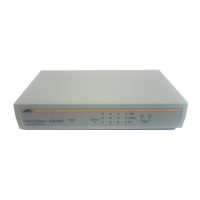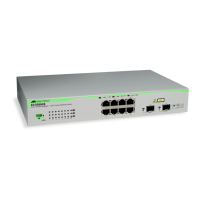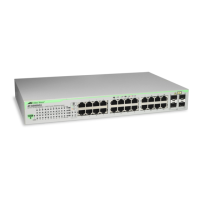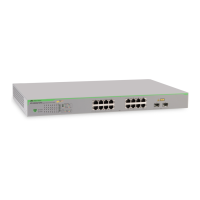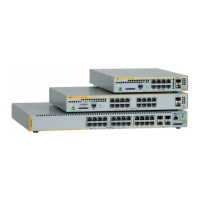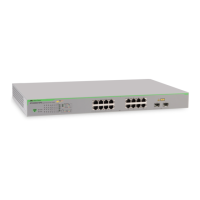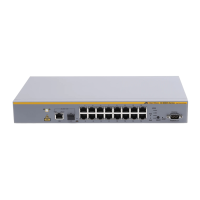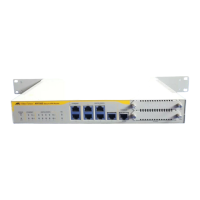Chapter 17 - IP Commands (including IP Multinetting)
IP Multinetting is a function that allows multiple IP interfaces to be assigned to the same VLAN.This is beneficial to the administrator when the number of IPs on
the original interface is insufficient and the network administrator wishes not to resize the interface. IP Multinetting is capable of assigning another IP interface on
the same VLAN without affecting the original stations or settings of the original interface.
Two types of interfaces are configured for IP multinetting, primary and secondary, and every IP interface must be classified as one of these.A primary interface
refers to the first interface created on a VLAN, with no exceptions.All other interfaces created will be regarded as secondary only, and can only be created once a
primary interface has been configured.There may be five interfaces per VLAN (one primary, and up to four secondary) and they are, in most cases, independent of
each other. Primary interfaces cannot be deleted if the VLAN contains a secondary interface. Once the user creates multiple interfaces for a specified VLAN
(primary and secondary), that set IP interface cannot be changed to another VLAN.
m
Application Limitation: A multicast router cannot be connected to IP interfaces that are utilizing the IP Multinetting function.
Note: Only the primary IP interface will support the BOOTP relay agent.
IP Multinetting is a valuable tool for network administrators requiring a multitude of IP addresses, but configuring the Switch for IP multinetting may cause
troubleshooting and bandwidth problems, and should not be used as a long term solution. Problems may include:
The Switch may use extra resources to process packets for multiple IP interfaces.
The amount of broadcast data,such as RIP update packets and PIM hello packets,will be increased.
The IP interface commands in the Command Line Interface (CLI) are listed (along with the appropriate parameters) in the following table.
Command Parameters
create ipif <ipif_name 12> <network_address> <vlan_name 32> {secondary | state [enable | disable]}
config ipif <ipif_name 12> [{ ipaddress <network_address> | vlan <vlan_name 32> state [enable | disable]} | bootp |
dhcp}]
enable ipif <ipif_name 12> | all
disable ipif <ipif_name 12> | all
delete ipif <ipif_name 12> | all
show ipif <ipif_name 12>
Each command is listed, in detail, in the following sections.
116
Allied Telesyn AT-9724TS High-Density Layer 3 Stackable Gigabit Ethernet Switch • Command Line Interface Reference Manual
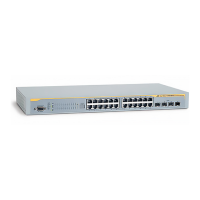
